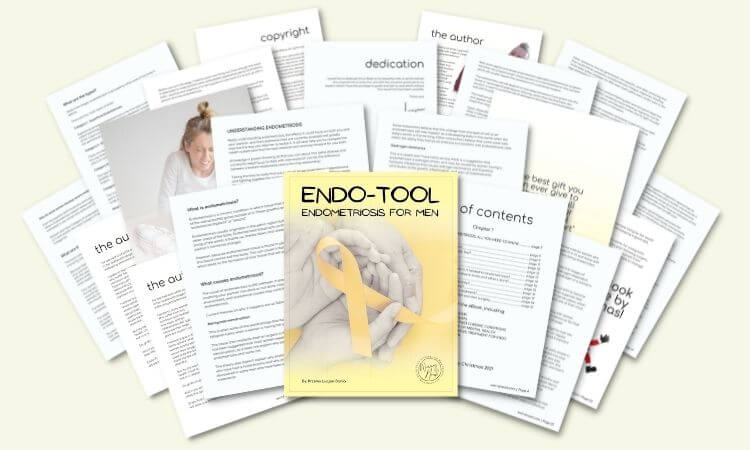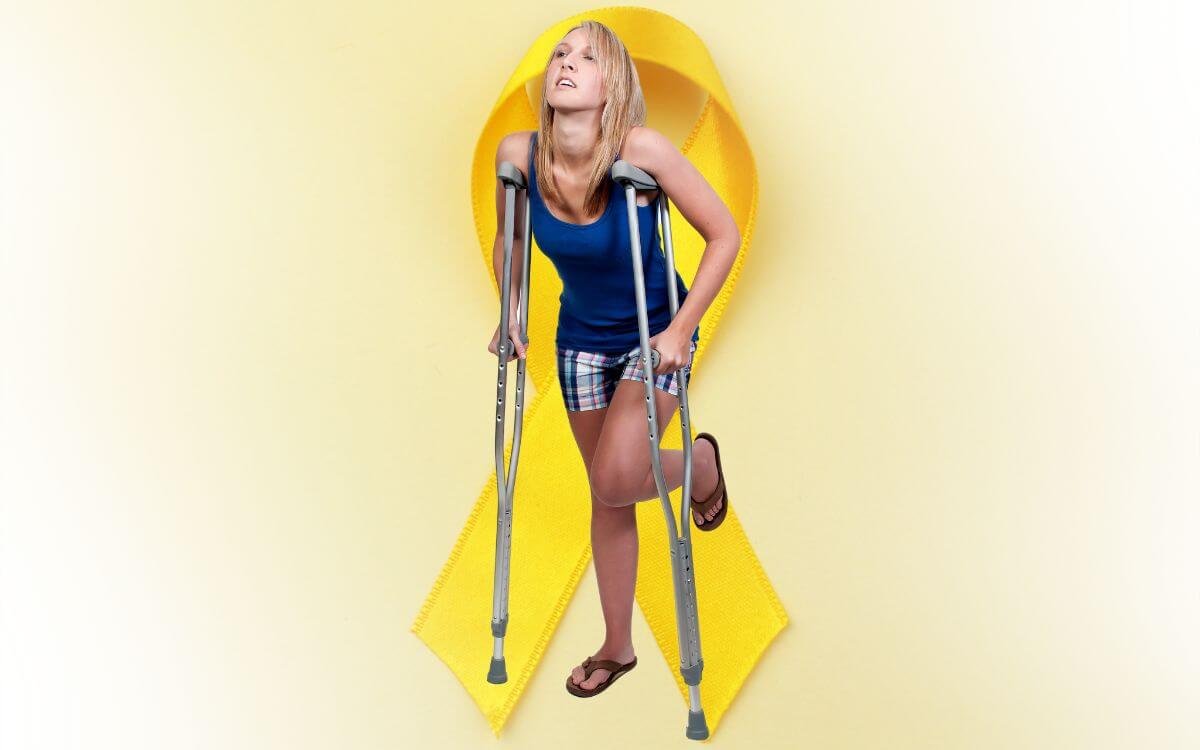Why endometriosis makes it difficult to walk?
My wife has stage IV deep infiltrating endometriosis which affects her bowel, bladder, pouch of Douglas, and both ovaries. Despite her extensive surgery to remove the endometriosis lesions, her pain continues and she often struggles to even walk. I began to wonder why endometriosis makes it difficult to walk and decided to learn more about it.
Here’s what I found.
Endometriosis makes it hard to walk because of the pain caused by pelvic adhesions, scar tissue, and inflammation. Endometriosis brain fog can cause dizziness and balance problems. All of the symptoms cause fatigue making it hard to move around.
Not only endometriosis makes it difficult to walk, but it can also even cause disability.
Endometriosis is my wife’s primary chronic condition, the other is fibromyalgia. And knowing that 31% of women with endometriosis are also diagnosed with fibromyalgia (FM), I can understand why.
It is worth exploring more…
What is endometriosis?
Endometriosis is a systemic disease, meaning it affects the entire body. Unlike many people think, it is not just a disease of the reproductive organs. In fact, endometriosis has been found in every organ of the body, including the brain.
The symptoms of endometriosis are vast and can vary from person to person. What my wife experiences may differ from another woman who has the same stage and type of endometriosis. This makes it difficult to diagnose.
The most common symptom is pelvic pain, which can be debilitating, but there are also other symptoms, including:
- Heavy periods with clots
- Painful periods
- Pain with intercourse
- Pain with bowel movements or urination
- Chronic fatigue
- Gastrointestinal problems
- Infertility
- Anxiety and depression
Endometriosis is a chronic condition that can have a major impact on a woman’s quality of life. If you are struggling with endometriosis, know that you are not alone. There are countless resources available to help you, but if you are a man who supports his partner, that is another story.
My wife’s endometriosis has impacted our relationship in many ways. I have had to become her advocate, her carer, and her sounding board. It is not an easy task, but I would not have it any other way.
If you are struggling to support your partner with endometriosis, I wrote an eBook, especially for you. It is rare to find information for those who support their chronically ill partners, especially men who care for women with endometriosis.
This is why I wrote “Endo-Tool: Endometriosis for Men”. It is a one-stop shop for everything you need to know on how to cope, be supportive, and be understanding of your partner.
I actually give the first chapter as a freebie, so you can make sure you get quality content and the value you deserve. The first chapter alone has all the comprehensive medical information about endometriosis, and you can grab it right away, for FREE.
It includes:
- What is endometriosis?
- What are the symptoms?
- What causes endometriosis?
- What does endometriosis look like?
- What are the stages?
- What are the types?
- What is adenomyosis and how is it related to endometriosis?
- Why do some women develop severe endo and others don’t?
- Does endometriosis cause infertility?
- How is endometriosis diagnosed?
- Do types and stages affect the treatment?
- Recurrence of endometriosis after excision surgery.
FREE Chapter of “Endo-Tool”
Endometriosis e-Book for Men

Endometriosis and mobility issues.
Endometriosis can cause mobility issues not only because of leg pain as it is commonly known. Endometriosis can affect:
- Legs
- Hips
- Pelvis
- Back
- Shoulders
- Neck
- Chest
If endometrial tissue grows on or around the sciatic nerve, women may experience leg pain that travels through their thighs, hips, buttocks, and feet and feels sudden, sharp, stabbing, and even electric-shock-like.
The mobility issues caused by endometriosis can include:
- Neurological issues
- Digestive issues
- Urinary issues
- Respiratory issues
Pain from endometriosis and trouble walking.
The pain from endometriosis is caused by the tissue growing in places it shouldn’t. This usually causes inflammation, pain, and eventually, scars and adhesions. The pelvic adhesions can cause the pelvic organs to stick together, making it difficult to walk.
The scar tissue can also make it hard to walk. The tissue grows in places where it doesn’t belong and doesn’t have an easy way to exit the body.
Endometriosis lesions can grow on any surface in the body, including the muscles and joints. This causes inflammation and pain, especially during menstruation when the uterine lining is shed. The pain can be so severe that it can make it difficult to walk or even stand.
My wife often freezes in excruciating sharp, stabbing pain, which as she explains, is unbearable. No amount of painkillers can touch the pain. Due to her gastric issues, she can only take orally Paracetamol. Diclofenac can relieve the endometriosis pain if it’d taken as a suppository, which also allows for bypassing digestive issues.
Endometriosis and fatigue.
The main reason endometriosis makes it difficult to walk is because of the pain. But that can also cause fatigue. This is because the lesions can release chemicals that interfere with the body’s ability to produce energy. The fatigue can be so severe that it can make it difficult to walk or even stand.
Fatigue also plays a big role in mobility issues. When you’re tired, your muscles don’t work as well, and you can’t walk as far or as fast. The pain and fatigue from endometriosis can make it difficult to walk, but there are things you can do to help.
You should get rest when you can, exercise to build up your strength and endurance, and talk to a specialist doctor about pain relief options.
If all of the above doesn’t seem to help, and endometriosis prevents you from walking, you could consider buying a wheelchair. I know it sounds like a drastic approach, but there are benefits of using a wheelchair when endometriosis causes trouble walking.
A wheelchair can help you get around when the pain is too much to walk. It can also help you rest when you need to and give you some independence. Most importantly, because of the fact that to people who don’t know your endometriosis is invisible, the wheelchair can be a visible reminder of your need for help.
It is the only visible part of this diabolic and disabling chronic condition.

Types of endometriosis pain.
There are many types of endometriosis pain. The most common is pelvic pain. This is the kind of pain that my wife experiences. It is a deep, throbbing pain that can radiate to the lower back and legs. It is usually worse during menstruation and can make it difficult to walk or even stand.
Endometriosis can also cause other types of pain, including:
- Dysmenorrhea: This is crampy pain that occurs during menstruation. It is caused by the inflammation of the endometriosis lesions.
- Dyspareunia: This is pain during or after sexual intercourse. It is caused by endometriosis lesions that are located in or near the vaginal area. Many women with endometriosis feel pain while having sex or up to 2 days later. For some, it feels stabbing or sharp. Others describe it as an ache in their pelvic area.
- Ovulation pain: This is a sharp pain that occurs during ovulation. It is caused by endometriosis lesions that are located in or near the ovaries.
- Pelvic or belly pain. It might start before your period and last several days. It can feel sharp and stabbing, and medication usually won’t help. Some women say it feels like their insides are being pulled down. They have a gnawing or throbbing feeling that can be severe.
- Backache. Your uterus and ovaries are near your back. Belly pain that makes you hunch over can hurt your back, too.
- Leg pain. Endometriosis can affect nerves that connect to your groin, hips, and legs. This can make it hard to walk. You may limp or have to rest often.
- Painful bowel movements. Depending on the affected areas, it might hurt to poop.
- Painful urination. If endometriosis is near your bladder, it might hurt to pee.
Endometriosis can cause pain in many different ways. The pain can be sharp and stabbing, or it can be a deep, throbbing pain. It can radiate to the lower back and legs. It is usually worse during menstruation and can make it hard to walk.
Conclusion on why endometriosis makes it difficult to walk.
Endometriosis is a complex condition that can have a major impact on a woman’s quality of life. It can also cause other problems that make it difficult to walk.
For example, endometriosis can cause the formation of pelvic adhesions. These are bands of scar tissue that can fuse together organs and tissues in the pelvis. This can lead to pain and stiffness in the pelvis and make it difficult to walk.
The other reason why endometriosis may make it difficult to walk is that this condition can cause inflammation in the pelvic region, which can make walking uncomfortable. Endometriosis can also cause fatigue, which can make it hard to muster the energy to walk.
Endometriosis inflammation is also the cause of the so-called “endo belly”. Endo-belly is the distension of the abdomen that endometriosis can cause. This happens because the lesions produce chemicals that interfere with the digestive system. This can lead to bloating, gas, and constipation, which can all make it difficult to walk.
If you’re dealing with endometriosis and struggling to walk, be sure to talk to your doctor. There are treatments available that can help ease your symptoms and improve your quality of life.
FREE Chapter of “Endo-Tool”
Endometriosis e-Book for Men



About Me
Hi, I’m Lucjan! The reason why I decided to create this blog was my beautiful wife, who experienced a lot of pain in life, but also the lack of information about endometriosis and fibromyalgia for men…
